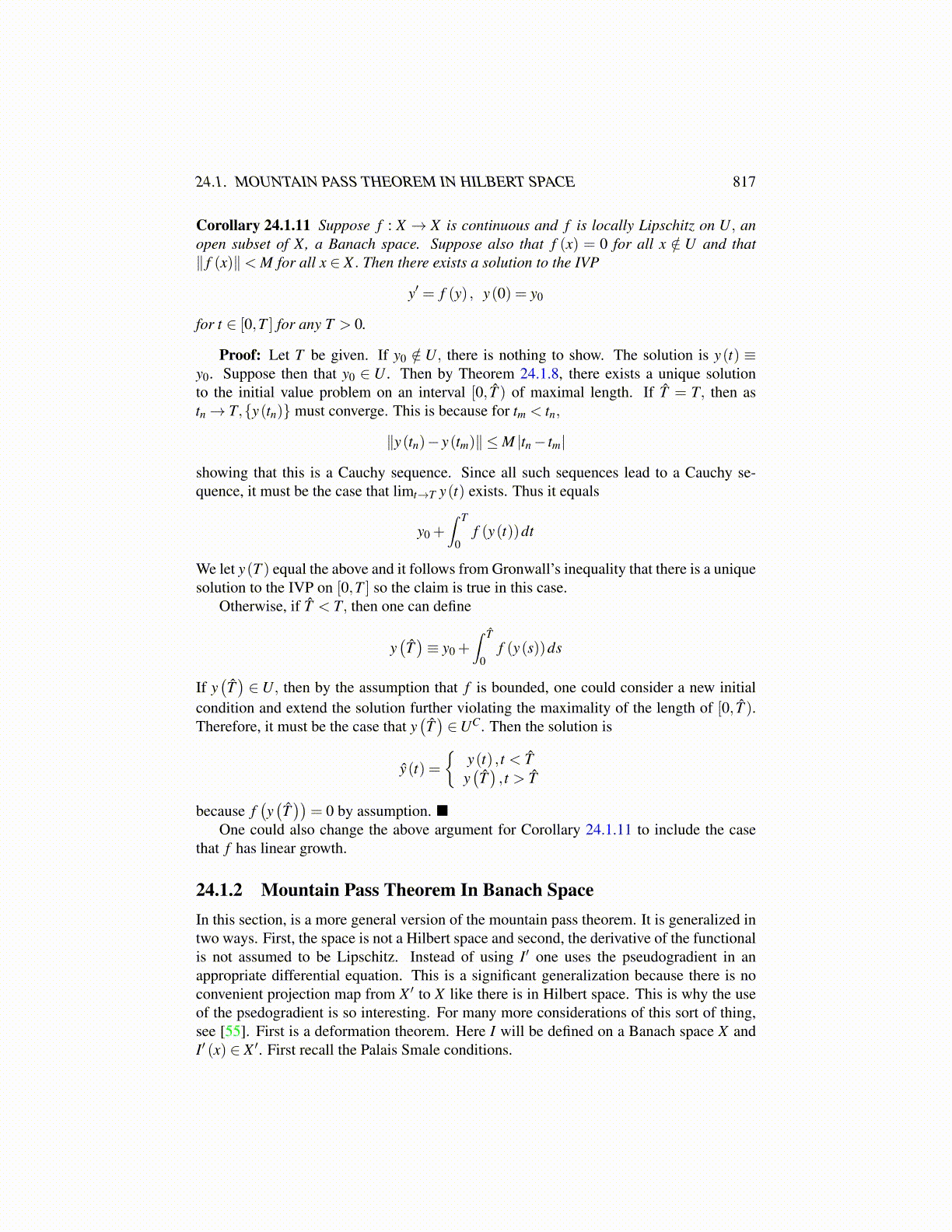
24.1. MOUNTAIN PASS THEOREM IN HILBERT SPACE 817
Corollary 24.1.11 Suppose f : X → X is continuous and f is locally Lipschitz on U, anopen subset of X, a Banach space. Suppose also that f (x) = 0 for all x /∈ U and that∥ f (x)∥< M for all x ∈ X . Then there exists a solution to the IVP
y′ = f (y) , y(0) = y0
for t ∈ [0,T ] for any T > 0.
Proof: Let T be given. If y0 /∈ U, there is nothing to show. The solution is y(t) ≡y0. Suppose then that y0 ∈ U . Then by Theorem 24.1.8, there exists a unique solutionto the initial value problem on an interval [0, T̂ ) of maximal length. If T̂ = T, then astn→ T,{y(tn)} must converge. This is because for tm < tn,
∥y(tn)− y(tm)∥ ≤M |tn− tm|
showing that this is a Cauchy sequence. Since all such sequences lead to a Cauchy se-quence, it must be the case that limt→T y(t) exists. Thus it equals
y0 +∫ T
0f (y(t))dt
We let y(T ) equal the above and it follows from Gronwall’s inequality that there is a uniquesolution to the IVP on [0,T ] so the claim is true in this case.
Otherwise, if T̂ < T, then one can define
y(T̂)≡ y0 +
∫ T̂
0f (y(s))ds
If y(T̂)∈U, then by the assumption that f is bounded, one could consider a new initial
condition and extend the solution further violating the maximality of the length of [0, T̂ ).Therefore, it must be the case that y
(T̂)∈UC. Then the solution is
ŷ(t) ={
y(t) , t < T̂y(T̂), t > T̂
because f(y(T̂))
= 0 by assumption.One could also change the above argument for Corollary 24.1.11 to include the case
that f has linear growth.
24.1.2 Mountain Pass Theorem In Banach SpaceIn this section, is a more general version of the mountain pass theorem. It is generalized intwo ways. First, the space is not a Hilbert space and second, the derivative of the functionalis not assumed to be Lipschitz. Instead of using I′ one uses the pseudogradient in anappropriate differential equation. This is a significant generalization because there is noconvenient projection map from X ′ to X like there is in Hilbert space. This is why the useof the psedogradient is so interesting. For many more considerations of this sort of thing,see [55]. First is a deformation theorem. Here I will be defined on a Banach space X andI′ (x) ∈ X ′. First recall the Palais Smale conditions.